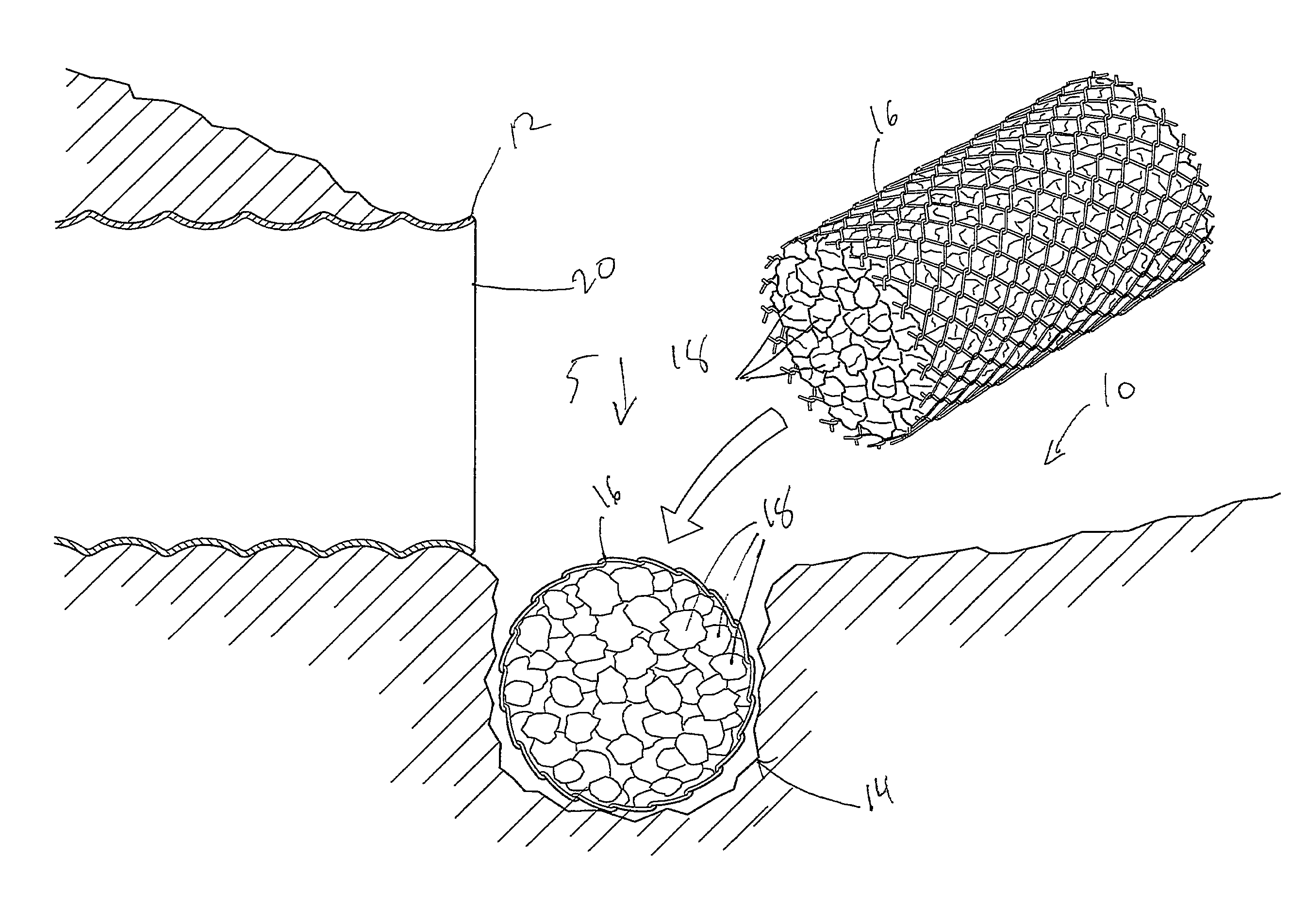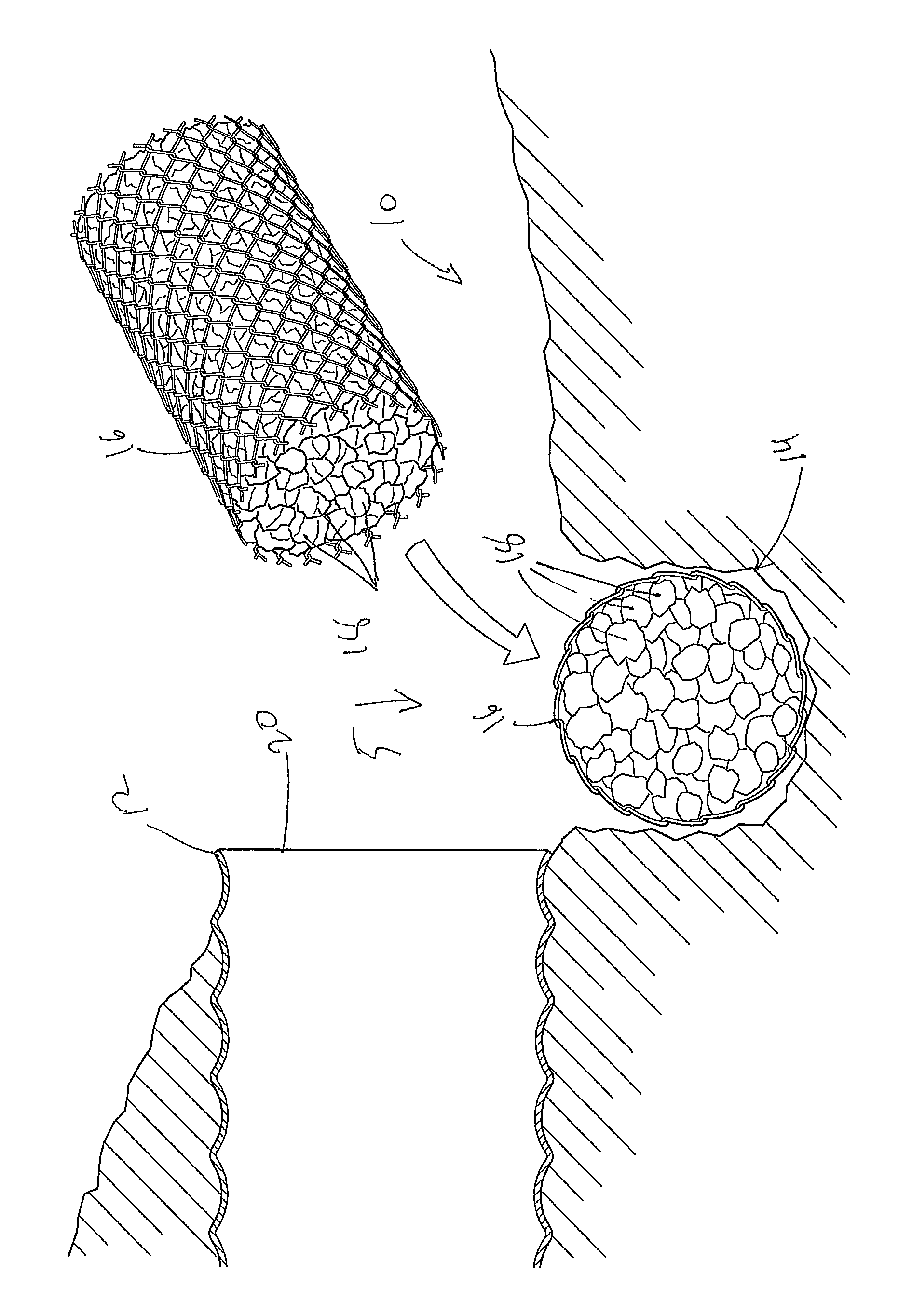Water deflection silt collection system
a collection system and water deflection technology, applied in water cleaning, filtration separation, separation processes, etc., can solve the problems of restricted water flow, roadway washouts or even landslides, water flowing through drainage ditches and streams can become contaminated with silt, etc., to reduce the amount of silt, and increase the effect of silt removal
- Summary
- Abstract
- Description
- Claims
- Application Information
AI Technical Summary
Benefits of technology
Problems solved by technology
Method used
Image
Examples
Embodiment Construction
[0008]A “water channel” as used herein may be any place where water tends to flow in a concentrated manner, as opposed to a broad or sheet-like manner. Water channels need not carry water at all times, or even most of the time. The channel may be natural or artificial, and may carry water from natural sources, such as rain, or from artificial sources, such as irrigation, washing of equipment, construction sites, or residential, industrial, or agricultural effluent. Non-limiting examples of water channels include streams, irrigation and drainage ditches, swales, draws, culverts, French, tile, or perforated-pipe drains, and spillways.
[0009]A “substantially impervious object” as used herein is any object which absorbs minimal water when immersed in it, but need not be completely waterproof. They may be naturally occurring or artificial. Non-limiting examples include rocks, objects constructed of metal, fiberglass, plastic, or similar materials, and artificial rock-like objects such as ...
PUM
| Property | Measurement | Unit |
|---|---|---|
| diameter | aaaaa | aaaaa |
| diameter | aaaaa | aaaaa |
| diameter | aaaaa | aaaaa |
Abstract
Description
Claims
Application Information
 Login to View More
Login to View More - R&D
- Intellectual Property
- Life Sciences
- Materials
- Tech Scout
- Unparalleled Data Quality
- Higher Quality Content
- 60% Fewer Hallucinations
Browse by: Latest US Patents, China's latest patents, Technical Efficacy Thesaurus, Application Domain, Technology Topic, Popular Technical Reports.
© 2025 PatSnap. All rights reserved.Legal|Privacy policy|Modern Slavery Act Transparency Statement|Sitemap|About US| Contact US: help@patsnap.com


